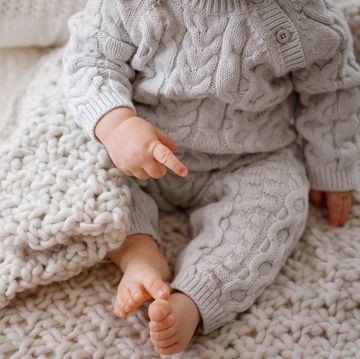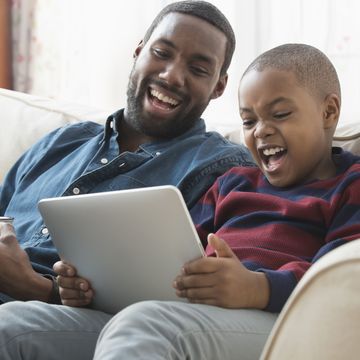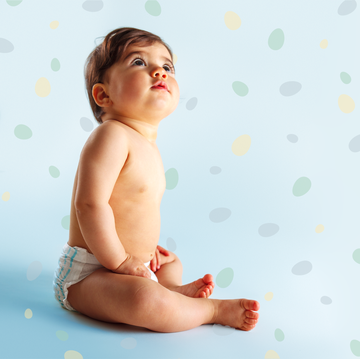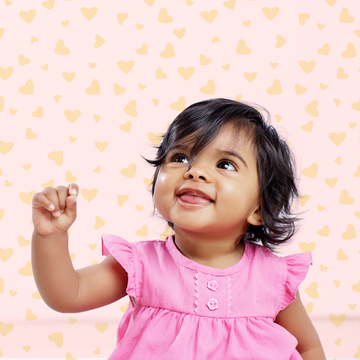I pulled on my favorite Star Wars t-shirt, the one with Queen Amidala in her full royal regalia. I added a Naboo emblem necklace, which looks like a fleur de lis if you’re not dialed in to prequel lore and my Vera Bradley x Star Wars cross-body bag, which has Luke, Obi-Wan, Yoda and stormtroopers subtly woven into the pattern. My 8-year-old daughter wore her Ewok “Yub Nub” shirt, but our ensembles paled in comparison to my husband’s, who broke out his bomber jacket that features a full Star Wars-inspired scene splashed across the entire front and back, Gungans a-blazing.
Were we headed to the Star Wars Celebration, the yearly fan gathering devoted to all things happening in a galaxy far, far away? Nah, just the multiplex. In honor of its 25th anniversary, The Phantom Menace returned to theaters for a limited time. And after scanning the crowd in my auditorium, I would say a vast majority of those in attendance had dressed in their own Star Wars clothing for the occasion.
Dressing up has gone through a generational shift.
I wasn’t always a theme dresser. As someone born on the cusp of Generation X, I grew up during the height of grunge. Showing too much enthusiasm for anything, especially how you looked, made you an embarrassing try-hard. And wearing fan-themed clothing made you a sell-out, using your body as a billboard to shill for big corporations. Instead, “a typical outfit,” fashion critic Bernadine Morris wrote of the ‘grunge look’ in the New York Times, “looks as if it were put together with the eyes closed in a very dark room.”
“Gen X was the Reality Bites generation, the Slacker generation,” says Jane Buckingham, CEO of the trend-forecasting company Trendera. “We were famous for our supposed apathy, but it wasn't so much laziness as a disillusion with the future that seemed uncertain and a ‘path’ that seemed broken. So there wasn't a lot of ‘dressing up’ or fantasy for this generation. It was more about playing things down than playing things up.”
Nobody put this Gen X ethos into words more succinctly than Droz Andrews, played with expert aloofness by Jeremy Piven, in PCU (a movie modeled after my undergraduate alma mater, so his words were sacrosanct even through my university years). “What's this?” he asks a friend as they’re preparing to go out for a concert. “You're wearing the shirt of the band you're going to see? Don't be that guy.”
Not wanting to be “that guy,” I dismissed theme dressing as something for the fringes: the sci-fi geeks going to fan conventions, the LARPers donning armor and heading into battle and the theater kids who loved to draw attention to themselves. My twelfth grade English teacher, who also directed the school plays, was a champion theme dresser; in my memory, she wore nothing but black and orange for the entire month leading up to Halloween and a different holiday-themed brooch every day in December. Meanwhile, I wore the same ratty pair of jeans three times a week, with a small selection of basically identical flannels.
Now, we’re in the wake of Taylor Swift’s Eras tour, and if you aren’t being “that guy,” you’re missing the point. You don’t just wear the bands’ tees to the concerts; you dress in outfits inspired by the artists themselves. It’s a whole generational shift.
“Millennials and Gen Z are all about being individuals and expressing themselves,” Buckingham says. “These generations are all about trying on different personalities and showing different sides of themselves at different times. Theme dressing can do this. In addition, Millennials and even more so Gen Z started to have social media, where the pressure to have something to photograph and show the world really began.” Every outing has transformed into an Event-with-a-capital-E. And every Event needs its own costume.
"Kidults" have brought theme dressing into everyday life.
Despite the changing attitudes around me, I still couldn’t bring myself to get on the theme-dressing bandwagon — until I had a kid. Then, I was thrust into a world of spirit days, “mommy and me” outfits and party invites that asked guests to dress to match the occasion’s motif. I started to feel guilty, like my refusal to dress up would cut my daughter off from joy. I wanted her to feel unbridled excitement. I didn’t want her to care about being “that guy.” Which meant that I had to start dressing up too.
“We know kids are always watching what we're doing as parents — more than what we're saying,” says Emily Edlynn, Ph.D., a clinical psychologist specializing in children and adolescents and the author of Autonomy-Supportive Parenting. “Kids typically absorb what you do — do you dress up for theme work days, for example? — more than if you were to say, ‘You should do your school's spirit days!’"
So long as my “encouragement” doesn’t cross the line into “parental pressure,” getting excited about family theme dressing gives my daughter the tacit permission she seeks to get into it, too. And, assuming there’s no coercion in any direction, theme dressing could even strengthen our family unit. “It's an opportunity to bond through fun as a family, which is really healthy,” Edlynn says.
Lucky for me, my daughter was born in the mid-2010s. Right around that time, a bunch of cultural forces came together to ease my transition into theme dressing. Social media and front-facing cameras came into their full powers — “selfie” was the Oxford Word of the Year in 2013 — giving theme dressers more of an audience, which invited more people to do it, which made it less of a fringe activity.
Staging those selfies got simpler, too. One of the reasons we were able to all wear our Star Wars clothes to The Phantom Menace was that we already had them; hybrid schedules and an increase in working from home means a bigger slice of the clothing budget is freed up for “fun” apparel instead of office-appropriate workwear. My husband, who transitioned to full-time freelance in 2020, now has a wardrobe that is almost entirely t-shirts for bands, comic books and movies. He gets compliments wherever he goes.
We weren’t the only ones changing our budgets this way. Also during the pandemic, retailers saw the rise of the “kidults,” or grown-ups who use their leisure time and disposable income for childlike pursuits, stigma be damned. Kidults have been a boon to the toy industry specifically, buying up things like pricey adult-oriented LEGO sets and high-end collectible action figures. The Toy Association reported that kidults were the biggest driver of growth in the toy industry in 2023.
Apart from toys, though, you also have to assume some of those kidult dollars are headed elsewhere, like housewares (remember the $900 Tatooine Le Creuset dutch oven?), entertainment (like tickets to the endless blockbuster comic-book adaptations) and, of course, theme clothing.
“Fandom is more than just an interest, it's a lifestyle,” says Ashley Eckstein, actress and founder of Her Universe, a site for fan-inspired apparel. Star Wars devotees know Eckstein as the voice of Ahsoka Tano on The Clone Wars, and she started Her Universe — the source of both my Naboo necklace and the Phantom Menace bomber jacket — because she felt female fans were being under-served in the market and deserved their own theme clothing.
“It's becoming more and more acceptable to show off your fandom in your everyday life, and that includes fashion,” Eckstein says. “I like to think of our outfit for the day as our armor. What we wear inspires us to channel our favorite characters and empowers us in our everyday lives.”
Everyone theme dresses at Disney.
If there’s one place where theme-dressing has gone from the fringes to the norm, it’s the Disney theme parks. I have photos from my first trip to Walt Disney World in the ‘80s. Of course, I’m wearing the requisite Mickey ears. What strikes me now, though, is that the adults on our two-family trip were not.
On my most recent voyage to Disneyland this past spring break, it was harder to find people, young or old, who weren’t decked out in Disney gear, including some combination of collectible pins, Loungefly backpacks, spirit jerseys, and ears of all stripes. And then there were the families who took it a step further, wearing matching vacation outfits, often personalized, to commemorate their trips. (There were even some backlash-to-the-trend tees with slogans like, “‘Let’s get matching Disney shirts,’ said no dad ever.”)
So, why didn’t my group take part in the ‘80s? It might have been the access: The Cricut and Etsy — two common ways to get or make those personalized tees — only debuted in the mid-2000s. It would have been much more difficult for my party to find a printer willing to make a small, custom order of seven shirts in 1985.
In addition, the rise of fast fashion means that, if they don’t care about personalization, any family can get in on the act with a low barrier to entry. “Disney themselves started making merchandise more readily available to everyone,” says Becky Gandillon, author of The Unofficial Guide to Walt Disney World. “You didn't have to wait until you went to Disney to buy Disney t-shirts, or make a special trip to a Disney store. You could go to Walmart or Target.”
It’s also easier than ever to figure out how to mix up those ready-made clothes to make a picture-perfect group. “There’s a proliferation of services that can help you look put together even if you don't know how,” Gandillon says. “Once Upon a Wardrobe is a great case study — they use their Instagram page to share out ‘templates’ of outfits based on various resorts or rides or other themes. So not only are clothing pieces readily available on shopDisney, Amazon or Etsy, but I don't even have to go through the effort of putting them together to make an outfit.” Companies like Pat Pat and Imagikids sell coordinating Disney vacation looks for the whole family that you can buy in one go. It’s Gen Z enthusiasm and Gen X slackerdom rolled into one.
Beyond the convenience, there’s clearly an appetite to dress for the parks. Leslie Kay is the founder of the DisneyBound blog, which offers inspiration for how to dress like different characters without going full costume (which isn’t allowed for Disney visitors over 14). It started in 2011 in advance of Kay’s first trip to Disney World, when she wanted to wear something inspired by the movie Tangled. “I created an outfit with the thought, ‘What would Rapunzel wear if she was just a regular girl in the real world?’" she says. She posted a collage of wardrobe pieces on her blog. “From there I did the rest of the princesses. DisneyBound started to get requests for other characters, and so the collages kept coming!” Now, “DisneyBounding” is a verb, roughly meaning to dress like the characters in real clothes.
She says part of the appeal of dressing up is the agelessness of it. “There shouldn't be an expiration date on having fun,” she says. “And playing dress up is just that — fun! So many DisneyBounders are frequent visitors to the Disney Parks but the parks don't change all that frequently. I find every time I visit a Disney Park DisneyBounding as a character, I experience the park differently.”
The same year that Kay started DisneyBound, designer Justin J. founded Dapper Day, which organizes events where people “step out in style,” usually in vintage fashions — basically a day to celebrate dressing up for the sake of dressing up. Dapper Day holds outings at museums and other locations, but they also host unofficial events at Disneyland and Walt Disney World. And while the looks don’t have to be inspired by Disney specifically, “at our Disney park outings we’ve had groups in outfits inspired by all the Disney mountains — Big Thunder, Splash, Space, the Matterhorn, etc — or all the tea cups from the spinning teacup ride,” he says. (He also mentions that once someone pulled together a whole outfit inspired by a trash can in Fantasyland!) “I love that our events let people who enjoy being dressed up be in a space where they don’t stand out — myself included,” he says.
When people take it to that level, even I can get on board. When my family went to Disneyland, we packed a series of Disney-inspired looks — not quite the level of a DisneyBound or a Dapper Day, but definitely on theme. But the Disney parks are literally walled gardens. They’re designed so that you can’t see the real world beyond “the berm,” or the barrier between the magical universe inside the parks and the workaday life outside of them. And inside the berm, they’ve created culture where, like Justin J. says, you’re more of an outsider if you don’t theme dress than if you do. I could do it for a week, and claim I’m still not a “theme dresser” in real life.
Is it really a holiday if you don't wear matching outfits?
Outside of Disney World, if there’s a day where theme-dressers take over, it’s Halloween. As a certified party pooper when it comes to all-things dress-up, once I got past a certain age I was happy to leave Halloween behind me, stepping into a new utopia where no one ever expected me to wear a costume.
So if you were to tell me that, after some blissful, no-getup years, I’d be drawn back into the world of Halloween costumes, I never would have believed you. When I was a kid, the idea of the “family Halloween costume” had no purchase, and there was never any expectation that parents would get on board with the cultural obsessions of elementary schoolers. If I had said I wanted to be a Smurf, there was just no universe where my father would say, “Cool, and I’ll be Gargamel and your mom can be Azriel.”
But apparently my peers recall their childhood Halloweens more fondly than I do, and they — moreso than their kids! — are driving an explosive growth in multi-generational group costumes. “One of the biggest reasons we see more and more adults dressing up for Halloween each year is because Millennials and Gen Z are now parents,” says Aneisha McMillan, marketing maven at the Halloween & Costume Association, who says she has noticed a tremendous growth in interest for group costumes starting about five years ago. “These are the generations that rank Halloween as their No. 1 favorite holiday, even above Christmas. They are relentlessly nostalgic groups that long for their childhood experiences, and Halloween provides the perfect opportunity to travel back in time.”
Group Halloween costumes also highlight Millennial/Gen Z parents’ ambivalence to living in a digitally connected world. “Family costumes give parents a rare opportunity to connect with their kids — even older kids — while they’re unplugged,” McMillan says. “On the other hand, our reliance on social media also helps fuel the need for family Halloween pictures and bragging rights online.”
And those digital humblebrags last from Halloween through the end of the year with the Christmas-season equivalent of the family costume: the matching holiday family pajamas. Matching “famjams” have been around for decades — some estimate since the ‘50s — but now they are an economic engine all their own. Hanna Andersson started their family pajama line in 1993 with just four designs; now they have more than 30 holiday-themed prints, in addition to matching PJs for Halloween, Valentine’s Day, Easter and the Fourth of July.
Old Navy didn’t start selling its “Jingle Jammies” until 2009, but it didn’t take long to catch up; according to a 2020 press release, between Halloween and New Year’s Eve, the store sold 222 pairs of Jingle Jammies every minute. According to the company, that’s “enough to fill Oracle Park, Chase Center, Yankee Stadium and MetLife Stadium combined — with more than 87 pairs for each seat.” If you need a pair of pajamas in the cold-weather months, how can anyone, even a reluctant theme-dresser, resist?
I finally give in.
Today, any day can be Halloween or Christmas Eve. There are few rules left dictating when to wear “theme” clothing. You can dress up for a big event like a concert or convention — or just for a random Saturday afternoon at the movies. Cosplay, or whatever you’d call the more casual version of cosplay, is officially mainstream.
“I like to compare it to sports,” says Eckstein, the Her Universe founder. “It's very common for fans to wear a shirt for their favorite sports team when they go to a game. We don't think twice when we see people paint their face or body in a team's colors or with a team's logo. Why is it any different if a person dresses up like a Jedi Knight or Captain America? It's the same thing.”
When they started out, both Eckstein and DisneyBound’s Kay say they were under-served as consumers. “I think there was a forgotten demographic of people when it came to fandom-based brands,” Kay says. “A lot of the time they were marketing to children or to parents. Teens, young adults and childless adults were considered to be too old for those brands.”
That’s no longer the case once companies realized how much they were leaving on the table. “Since Millennials and social media took over the market, we have seen a huge shift in the development of products and experiences that directly cater to those [younger generations],” Kay says.
Which is how I came to be the theme-dresser I am today. Though I spent most of my teens and 20s resisting any kind of dress-up, eventually the brands came knocking on my door. Halloween, holidays and special occasions spilled over into my everyday life so seamlessly, I didn’t even realize it was happening. I couldn’t hold back the tide anymore. And if it makes life a little more joyful for my kid, I don’t really want to. So sure, I’ll dress as Mario to match her Nintendo-themed seventh birthday party. I’ll wear a Mimikyu sweater to go with her Pokémon trainer Halloween costume. I won’t even complain (too) much when she discards the cute, preppy Roller Rabbit dress we’d picked out together for the first day of school for a Sailor Moon cosplay dress she found mixed in with the regular clothes at Target. And you know what? It’s actually pretty fun to be that guy. PCU’s Droz didn’t know what he was missing.

Marisa (she/her) has covered all things parenting, from the postpartum period through the empty nest, for Good Housekeeping since 2018; previously, she wrote about parents and families at Parents and Working Mother. She lives with her toy-collecting husband and daughter in Brooklyn, where she can be found helping out her team at bar trivia or posting about movies on Twitter and Bluesky.






















